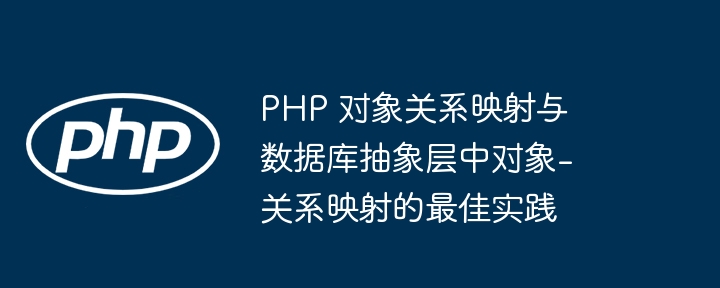
PHP Object Relational Mapping (ORM) best practices include naming consistency, proper mapping, annotations, avoiding hardcoding, leveraging query builders, and monitoring database schema changes. In practical cases, the Doctrine ORM framework can be used to connect to the MySQL database and query data. You need to configure the database connection and use the query builder to generate efficient queries.

PHP object-relational mapping and database abstraction layer: object-relational mapping best practices
Between relational databases and PHP objects The transformation is called object-relational mapping (ORM). ORM frameworks simplify this process and provide additional features such as query construction and object relationship management.
Best Practices
Practical Case: Using Doctrine ORM
Doctrine ORM is a popular PHP ORM framework. Here is an example that demonstrates how to use Doctrine ORM to connect to a MySQL database and query data.
1. Install Doctrine ORM:
composer require doctrine/orm
2. Configure database connection:
use Doctrine\ORM\EntityManager;
use Doctrine\ORM\Tools\Setup;
use Doctrine\ORM\Configuration;
// 创建一个 Entity Manager
$isDevMode = true;
$config = Setup::createAnnotationMetadataConfiguration([__DIR__ . '/src'], $isDevMode);
$conn = array(
'driver' => 'pdo_mysql',
'user' => 'root',
'password' => 'password',
'dbname' => 'database_name',
);
$em = EntityManager::create($conn, $config);3. Query Data:
$qb = $em->createQueryBuilder();
$qb->select('p.id', 'p.name')
->from('Product', 'p');
$query = $qb->getQuery();
$results = $query->getResult();
foreach ($results as $result) {
echo $result['name'] . PHP_EOL;
}The above is the detailed content of Best practices for object-relational mapping in PHP object-relational mapping and database abstraction layers. For more information, please follow other related articles on the PHP Chinese website!




